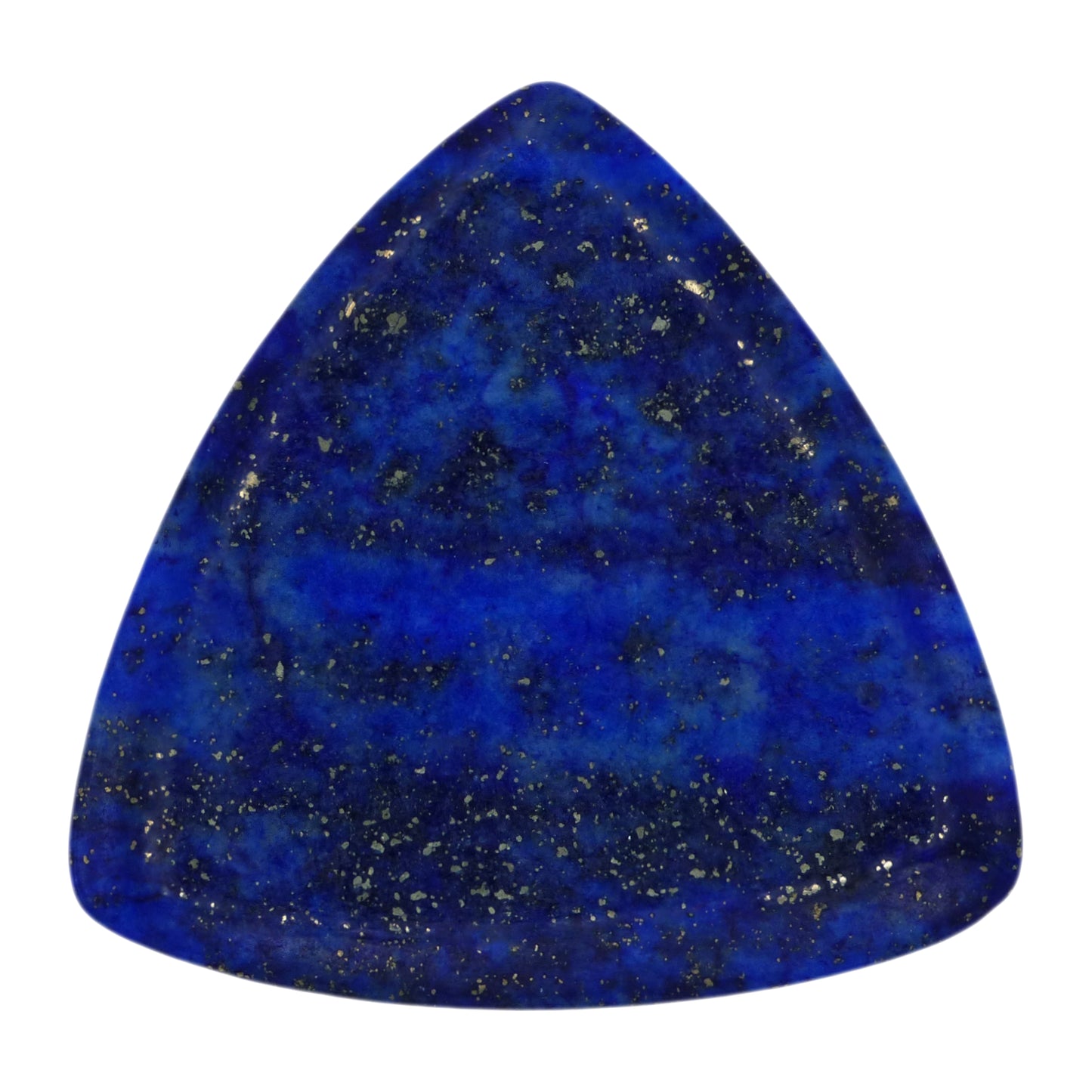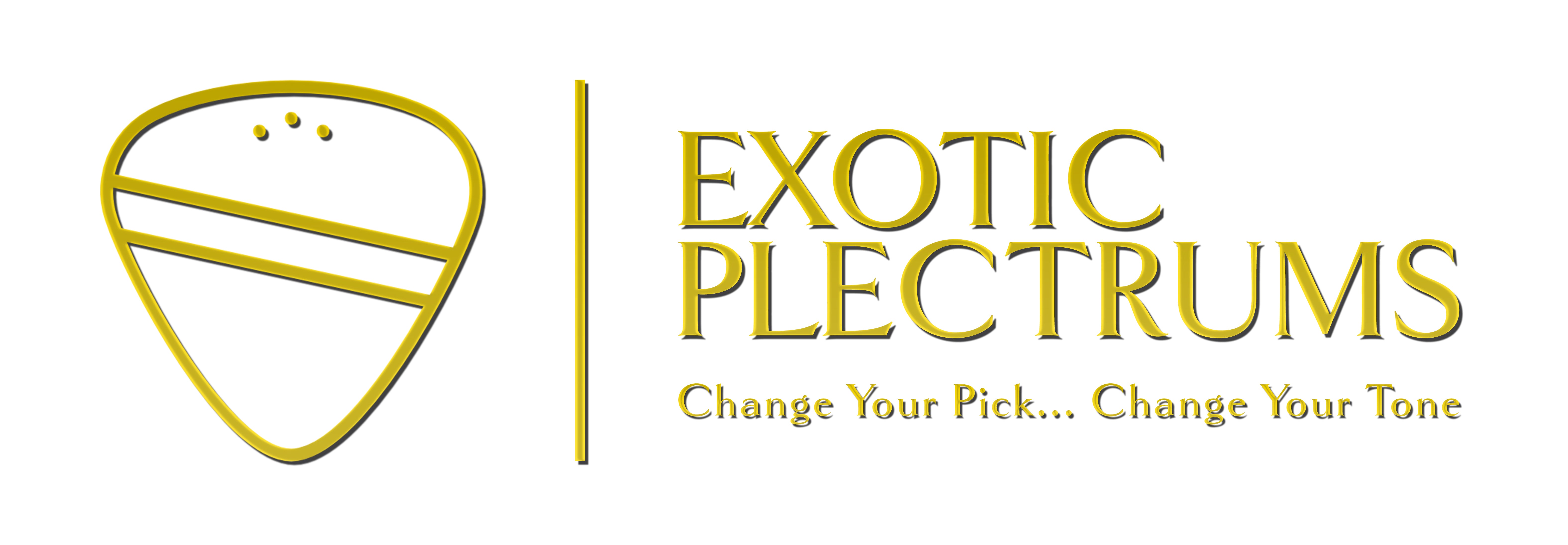Lapis Lazuli Stone Guitar Or Bass Pick - 3.0 mm Ultra Heavy Gauge - 346 Rounded Triangle Shape - Specialty Handmade Gemstone Exotic Plectrum
Lapis Lazuli Stone Guitar Or Bass Pick - 3.0 mm Ultra Heavy Gauge - 346 Rounded Triangle Shape - Specialty Handmade Gemstone Exotic Plectrum
Regular price
$7.99 USD
Regular price
$15.99 USD
Sale price
$7.99 USD
Unit price
per
Shipping calculated at checkout.
Couldn't load pickup availability
Lapis Lazuli Stone Guitar Or Bass Pick - 3.0 mm Ultra Heavy Gauge - 346 Rounded Triangle Shape - Specialty Handmade Gemstone Exotic Plectrum
These exotic Lapis Lazuli Stone plectrums are a great addition to your guitar pick collection. These plectrums can be used for any stringed instrument, and sound great for acoustic or electric guitar, bass, ukulele or other stringed instruments due to their bright and crisp tonal color production.
The 346 Rounded Triangle shape has been around for decades and is perhaps the 2nd most widely used guitar pick shape after the standard 351. The 346 is popular with guitar players, however it is especially favored by many bass players because of its larger size.
These picks are in a polished finish and have a very attractive aesthetic and natural beauty. Because these are a handcrafted product each one is unique and the inherent colors and patterns present in each individual stone will vary in appearance, as well as slightly in size and thickness. These plectrums are a very thick heavy gauge and measure approximately 3.0mm in thickness.
Start exploring new tones with these exotic Lapis Lazuli Stone guitar picks today because the simplest and most inexpensive way to change your tone is to change your pick.
Specifications:
• Thickness: 3.0mm
• Color: Lapis Lazuli Stone
• Material: Lapis Lazuli Stone
• Size: 33mm x 33mm x 3.0mm
• Shape: 346 Rounded Triangle Shape
• Blank guitar picks, no printing or logo
About The Material These Picks Are Made From:
Plectrums made from stone have been used traditionally throughout the world since the dawn of stringed instruments millennia ago. Lapis Lazuli is a metamorphic rock typically composed primarily of lazurite, calcite, sodalite, and pyrite (Fools Gold), with some other trace minerals usually present. Lapis Lazuli is known for its deep blue color and features pyrite inclusions that give it a golden glittery appearance.
The name Lapis Lazuli is the Latin name for the stone, which is derived from the Latin word lapis (stone), and lazuli (sky or heaven), which is a modified loan word that was adopted into Latin from Persian via Arabic. Thus the meaning is roughly "stone from the sky" or "stone from heaven." Lapis Lazuli has been used by humans since ancient times, and has been valued for its aesthetic qualities as well as its healing and metaphysical properties for thousands of years. Civilizations all around the world prize Lapis Lazuli for use in jewelry, beads, statuettes, bowls, amulets, seals, rings, and other ornaments.
The oldest known human usage dates back more than 9500 years in India during the Indus Valley Civilization period. Although other deposits have been discovered in modern times, the main source of Lapis Lazuli in antiquity was the mines in northern Afghanistan, which ultimately supplied everybody from the ancient Mesopotamians, to the Egyptians, Chinese, Greeks, and later Romans. Lapis Lazuli is mentioned frequently in ancient texts, including in The Bible and the Epic of Gilgamesh. The Pharaoh Tutankhamen's golden sarcophagus made heavy decorative use of Lapis Lazuli, showing its great importance and value in the ancient world. Later in the Renaissance period it was ground into a fine powder to make the rich blue pigment ultramarine which was highly prized by the greatest painters of the era.
Lapis Lazuli is a fairly durable stone, with an approximately 5-6 rating on the Mohs hardness scale, which makes it a fantastic and long lasting material for use in guitar picks.
These exotic Lapis Lazuli Stone plectrums are a great addition to your guitar pick collection. These plectrums can be used for any stringed instrument, and sound great for acoustic or electric guitar, bass, ukulele or other stringed instruments due to their bright and crisp tonal color production.
The 346 Rounded Triangle shape has been around for decades and is perhaps the 2nd most widely used guitar pick shape after the standard 351. The 346 is popular with guitar players, however it is especially favored by many bass players because of its larger size.
These picks are in a polished finish and have a very attractive aesthetic and natural beauty. Because these are a handcrafted product each one is unique and the inherent colors and patterns present in each individual stone will vary in appearance, as well as slightly in size and thickness. These plectrums are a very thick heavy gauge and measure approximately 3.0mm in thickness.
Start exploring new tones with these exotic Lapis Lazuli Stone guitar picks today because the simplest and most inexpensive way to change your tone is to change your pick.
Specifications:
• Thickness: 3.0mm
• Color: Lapis Lazuli Stone
• Material: Lapis Lazuli Stone
• Size: 33mm x 33mm x 3.0mm
• Shape: 346 Rounded Triangle Shape
• Blank guitar picks, no printing or logo
About The Material These Picks Are Made From:
Plectrums made from stone have been used traditionally throughout the world since the dawn of stringed instruments millennia ago. Lapis Lazuli is a metamorphic rock typically composed primarily of lazurite, calcite, sodalite, and pyrite (Fools Gold), with some other trace minerals usually present. Lapis Lazuli is known for its deep blue color and features pyrite inclusions that give it a golden glittery appearance.
The name Lapis Lazuli is the Latin name for the stone, which is derived from the Latin word lapis (stone), and lazuli (sky or heaven), which is a modified loan word that was adopted into Latin from Persian via Arabic. Thus the meaning is roughly "stone from the sky" or "stone from heaven." Lapis Lazuli has been used by humans since ancient times, and has been valued for its aesthetic qualities as well as its healing and metaphysical properties for thousands of years. Civilizations all around the world prize Lapis Lazuli for use in jewelry, beads, statuettes, bowls, amulets, seals, rings, and other ornaments.
The oldest known human usage dates back more than 9500 years in India during the Indus Valley Civilization period. Although other deposits have been discovered in modern times, the main source of Lapis Lazuli in antiquity was the mines in northern Afghanistan, which ultimately supplied everybody from the ancient Mesopotamians, to the Egyptians, Chinese, Greeks, and later Romans. Lapis Lazuli is mentioned frequently in ancient texts, including in The Bible and the Epic of Gilgamesh. The Pharaoh Tutankhamen's golden sarcophagus made heavy decorative use of Lapis Lazuli, showing its great importance and value in the ancient world. Later in the Renaissance period it was ground into a fine powder to make the rich blue pigment ultramarine which was highly prized by the greatest painters of the era.
Lapis Lazuli is a fairly durable stone, with an approximately 5-6 rating on the Mohs hardness scale, which makes it a fantastic and long lasting material for use in guitar picks.


